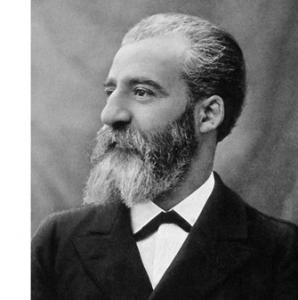
In the late 1800s the French chemist and 1906 Nobel Prize winner for chemistry Henri Moissan made an interesting discovery.
He discovered that by mixing the tungsten and carbon powders a new compound was formed. That compound formed a very hard and wear-resistant material when heated at high temperature in an electric arc furnace of its design. However, that material was too fragile to be used in today’s typical hard metal applications. This problem was analyzed and solved by Karl Schroter in 1914. Schroter was working as a researcher at Osram, Germany, at that time.
His very specific research focused on the possibility of finding new materials for drawing the filaments of electric bulbs. The wire inside the bulb of the lamp was made of a steel chain which, over time, widened as the gauge matrix of the wire was worn out. In other words, at the beginning of the processing period the drawing was small, getting bigger and bigger during the processing. Schroter had been in charge of finding a more resistant material than steel in order to draw the tungsten wire.
He undertook several experiments. In his research he found the solution by mixing tungsten and cobalt: an intuition that led him to a new material. He discovered that it was possible to mix tungsten carbide powders with a metal binder such as nickel or cobalt, and then the mixture could be sintered at a temperature of about 1500 ° C. In this way a low-porosity product was obtained, with a very high hardness and good toughness.
This is how the chemist came to discover a new alloy by solving a practical problem related to the production of light bulbs. This material was first introduced as a cutting tool by Krupp (German steel industry) in 1927, under the registered name “Widia” (wie Diamant – as diamond).
However, its commercial history is more complex. In Germany, Friedrich Krupp acquired the original patent and undertook a production program of Widia which consisted mainly of interspersed carbide tungsten particles with a cobalt matrix corresponding to 5 to 15% of the total composition. Following close negotiations with Krupp, all rights then passed to the Americans of General Electric, while Krupp maintained the right to export cemented carbide to the United States. General Electric formed the Carboloy Company, which opened
its subsidiaries Firth-Sterling Steel Company and Ludlum Steel Company. At that time in America the cemented carbide was known under the terms of Carboloy, Dimondite, and Strass Metal.
Although the first production tests were carried out in the Essen laboratories in 1922, it was not until 1926 that Krupp began to trade Widia in Germany.
Was it an expensive material?
In the ’20s / 30s the cemented carbide was very expensive, with a price higher than 450 euro per ounce. Yet even at that price its use could be economically justified.
Indeed, the habit of making only the tip of tools by cemented carbides derives from economic considerations. In any case, the instruments in Widia were tested at General Electric’s plants and became popular to public in 1928.




